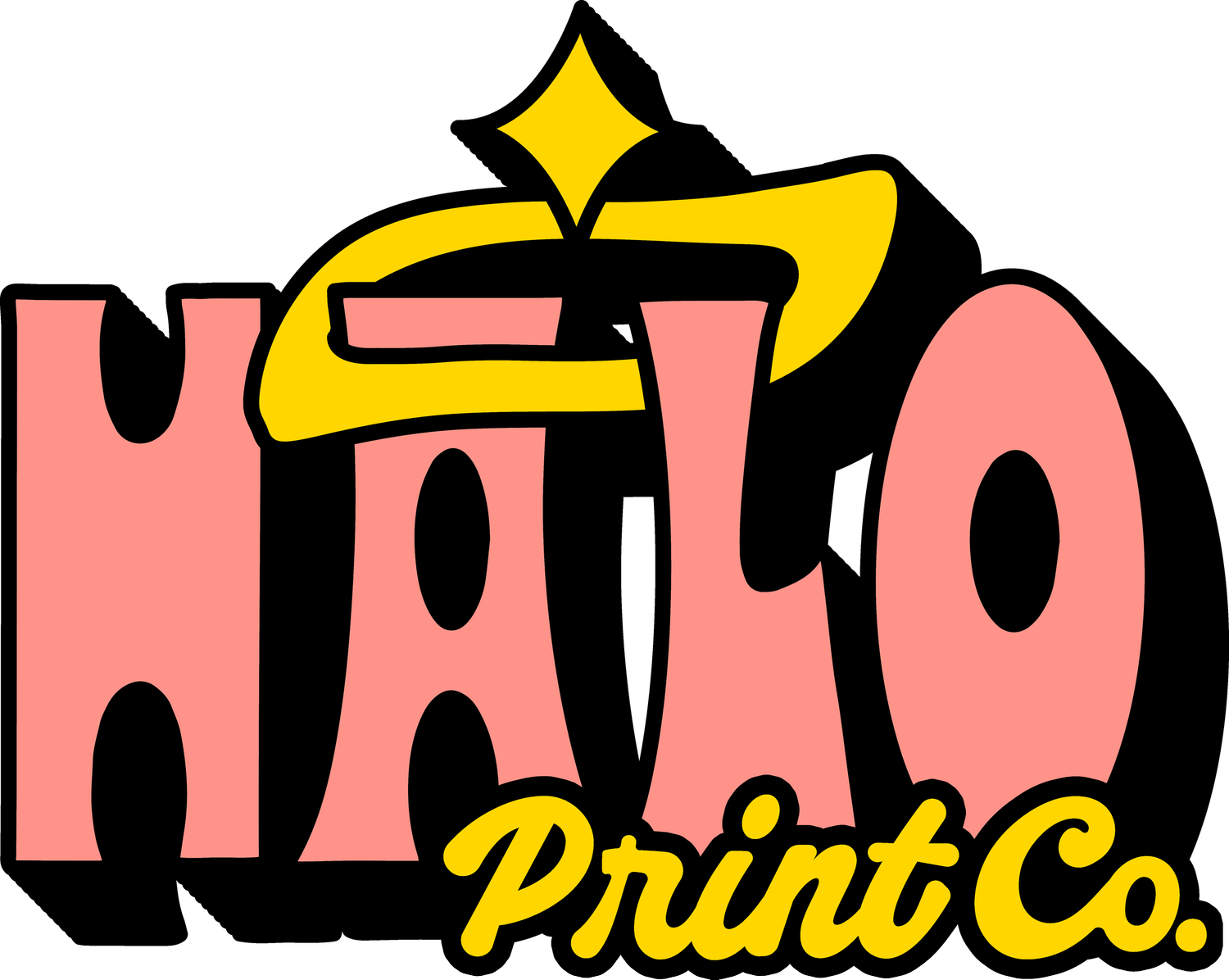DTG vs Screen Printing: Which Method is Best for Custom Apparel?
Custom apparel printing has two dominant methods: Direct-to-Garment (DTG) and screen printing. Your choice affects everything from budget and timeline to final quality and durability. This guide from Halo Print Co breaks down the differences to help you make the right decision for your project.
Whether you're launching a clothing line, creating corporate merchandise, or producing event apparel, the printing method you choose will significantly impact your project's success and cost-effectiveness.
What is DTG (Direct-to-Garment) Printing?
DTG printing works like a massive inkjet printer designed specifically for fabric. This digital process sprays eco-friendly water-based inks directly onto garments using specialised textile printers.
The process starts with pre-treating the fabric, followed by digital printing, and finishes with heat curing to set the design. The technology excels at reproducing complex designs with unlimited colours, gradients, and photorealistic details.
Modern DTG systems offer faster speeds, improved colour accuracy, and minimal setup time - making them perfect for on-demand printing and small batch runs.
What is Screen Printing?
Screen printing forces ink through a mesh screen onto fabric. Each colour requires a separate screen, with areas blocked out to create the design. Thick plastisol-based inks are pushed through with a squeegee, resulting in bold, durable prints.
This method produces vibrant, opaque colours that sit on top of the fabric for a high-impact look. Screen printing can also achieve special effects such as metallic finishes, glow-in-the-dark inks, and raised puff applications.
While setup is more labour-intensive, once prepared, screen printing is highly efficient for large quantities and remains the trusted standard for apparel brands worldwide.
Quality Comparison: DTG vs Screen Printing
Visual Quality
DTG: Best for complex, multi-colour, and photorealistic designs.
Screen Printing: Delivers vibrant, bold designs with strong opacity.
Feel and Texture
DTG: Soft, natural feel as inks soak into fibres.
Screen Printing: Thicker, raised feel that many associate with premium quality.
Durability and Longevity
Screen Printing: Extremely durable, lasting 50+ washes with strong colour retention.
DTG: Lasts 30–40 washes; softer feel but may fade slightly over time.
Cost Analysis
Screen Printing: Cost-effective for 25+ pieces due to setup costs spread across the order.
DTG: No minimums, ideal for 1–50 pieces, personalised designs, or limited editions.
Production Speed
Screen Printing: Longer setup, but faster bulk production once screens are made.
DTG: Minimal setup and same-day turnaround possible for small orders.
Fabric Compatibility
Screen Printing: Works well on cotton, blends, and polyester.
DTG: Performs best on high-cotton fabrics (50%+).
Environmental Considerations
DTG: Uses water-based inks, less waste, ideal for on-demand production.
Screen Printing: Uses more water and setup, but creates extremely durable garments that last.
When to Choose Each
Choose DTG printing if you need:
Small quantities (1–50 pieces)
Complex, detailed designs
Personalisation or testing new designs
Quick turnaround
Choose screen printing if you need:
Bulk orders (25+ pieces)
Bold, vibrant colours
Maximum durability
Cost-effectiveness at scale
Pro Tip: Many businesses use both methods strategically - DTG for samples and detailed designs, screen printing for bulk runs.
Choosing Your Printing Path with Halo Print Co
At Halo Print Co, we offer both DTG and screen printing under one roof, so you don’t have to stress about choosing the wrong method.
Our team will help you match your design, fabric, and order size with the printing technique that delivers the best results for your project.



